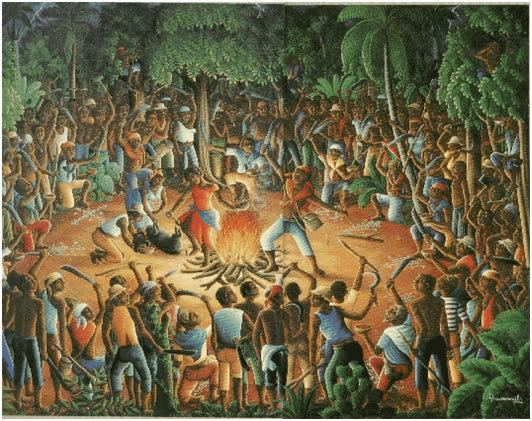 | ||
Bois ca man and the vodou revolution
Bois Caïman (Haitian Creole: Bwa Kayiman) is the site of the Vodou ceremony during which the first major slave insurrection of the Haitian Revolution was planned. On the night of August 14, 1791, representative slaves from nearby plantations gathered to participate in a secret ceremony conducted in the woods by nearby Le Cap in the French colony of Saint-Domingue. Presided over by Dutty Boukman, a prominent slave leader and Vodou priest, the ceremony served as both a religious ritual and strategic meeting as conspirators met and planned a revolt against the ruling white planters of the colony's wealthy Northern Plain.
Contents
- Bois ca man and the vodou revolution
- Bayyinah bello anthony pascal konp filo c r monie du bois ca man mission bati ayiti rtg
- References

The following prayer said by Dutty Boukman has been attributed to that night, translated as: Good Lord who hath made the sun that shines upon us, that riseth from the sea, who maketh the storm to roar; and governeth the thunders, The Lord is hidden in the heavens, and there He watcheth over us. The Lord seeth what the blancs have done. Their god commandeth crimes, ours giveth blessings upon us. The Good Lord hath ordained vengeance. He will give strength to our arms and courage to our hearts. He shall sustain us. Cast down the image of the god of the blancs, because he maketh the tears to flow from our eyes. Hearken unto Liberty that speaketh now in all your hearts (Heinl)
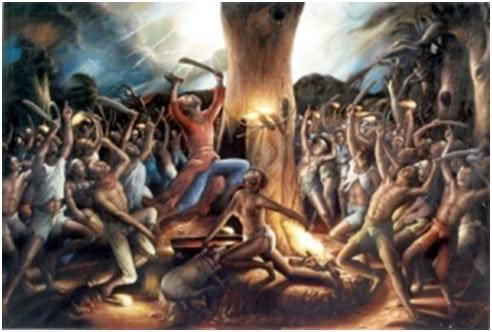
In the following days, the whole Northern Plain was in flames, as the revolutionaries conducted acts of violence towards those who had formerly enslaved them. Clouded in mystery, many accounts of the catalytic ceremony and its particular details have varied since it was first documented in Antoine Dalmas's "History of the Saint-Domingue Revolution" in 1814. The ceremony is considered the official beginning of the Haitian Revolution.
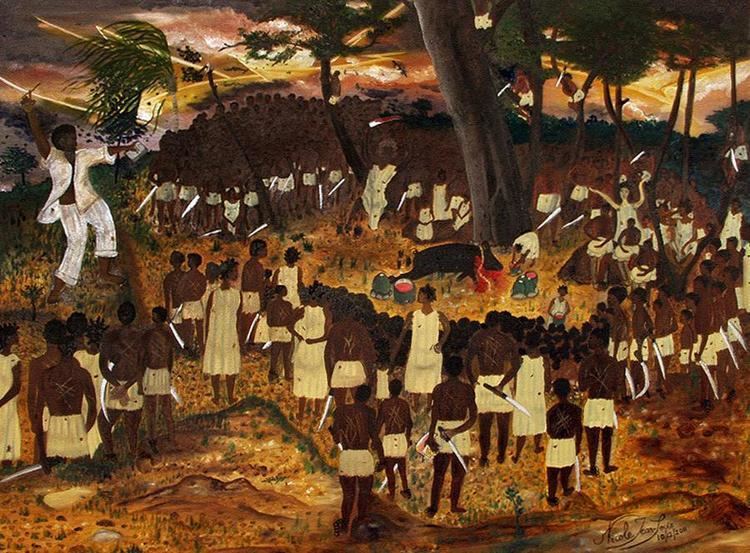
This excerpt from the official "History of Haiti and the Haitian Revolution" serves as a general summary of the ceremonial events that occurred:
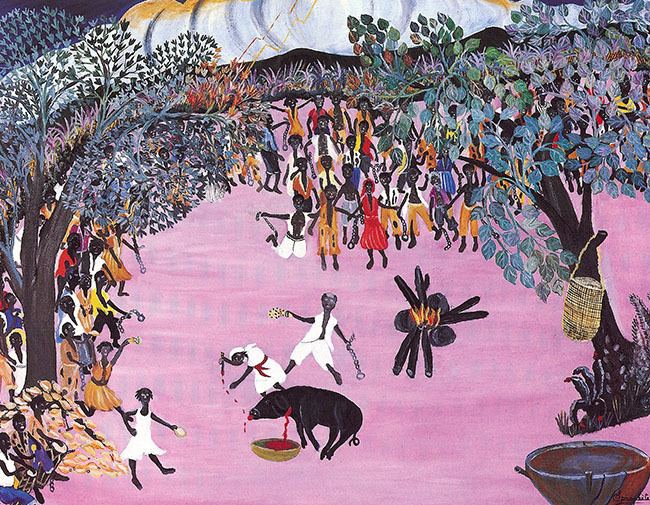
A man named Boukman, another houngan, organized on August 14, 1791, a meeting with the slaves in the mountains of the North. This meeting took the form of a Voodoo ceremony in the Bois Caïman in the northern mountains of the island. It was raining and the sky was raging with clouds; the slaves then started confessing their resentment of their condition. A woman started dancing languorously in the crowd, taken by the spirits of the loas. With a knife in her hand, she cut the throat of a pig and distributed the blood to all the participants of the meeting who swore to kill all the whites on the island.
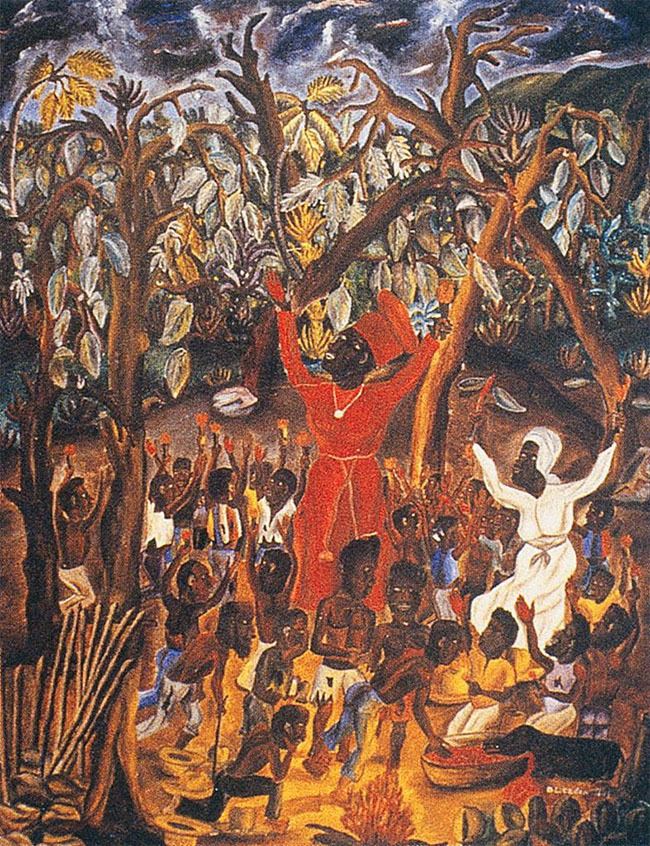
Despite purported facts and embellishments that have dramatized the ceremony over the centuries, the most reoccurring anecdote is the sacrifice of a black Creole Pig to Ezili Dantor by the mambo Cécile Fatiman and the conspiratorial pact formed through its blood. First documented by Dalmas, the following excerpt provides the first details of the sacrifice:
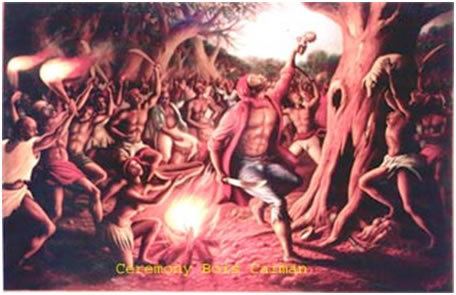
A black pig, surrounded by the slaves believe to have magical powers, each carrying the most bizarre offering, was offered as a sacrifice to the all-powerful spirit...The religious community in which the nègres slit its throat, the greed with which they have believed to have marked themselves on the forehead with its blood, the importance that they attached to owning some of its bristles which they believed would make them invincible. The book:History of the Saint-Domingue Revolution, 1814 by Antoine Dalmas gives some conflicting account of the ceremony.
The black Creole Pig, although indigenous to the island, being domesticated centuries earlier by the Tainos, was a sacrifice to and a symbol of Ezili Dantor, the mother of Haiti who resembles the scarred Dahomey Amazons or Mino, meaning "Our Mothers" in the Fon language. It was a mixing of the traditions of the army of the Dahomey, which was the ethnicity of many of the slaves in Saint Domingue with the Taino, who had fled to the high mountains of Haiti (Haiti meaning high mountains in Taino) in order to escape the Spanish colonial genocide.
This ceremonial event has been considered by many conservative Christian sources as the Haitian "pact with the devil" that ignited the revolution. They were influenced by "spirtiual warfare" theology and concerned that the Aristide government had made efforts to incorporate the Vodou sector more fully into the political process. These Evangelicals developed a counter-narrative to the official national story. In this narrative, the ancestral spirits at the Vodou cemetery were re-cast as demons. In their view, the engagement with demons amounted to a pact that put Haiti under the rule of Satan. While some Haitian Evangelicals subscribe to this idea, most Haitian nationalists vehemently oppose it. This belief was referenced by Christian media personality Pat Robertson in his controversial comments during the aftermath of the 2010 Haiti earthquake. Robertson declared the Haitian people "have been cursed by one thing after the other" since the 18th century after swearing "a pact to the devil". Robertson's comments were denounced as false, ignorant, and inconsiderate.
